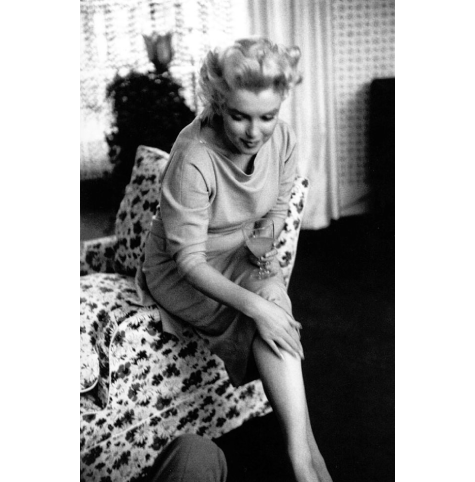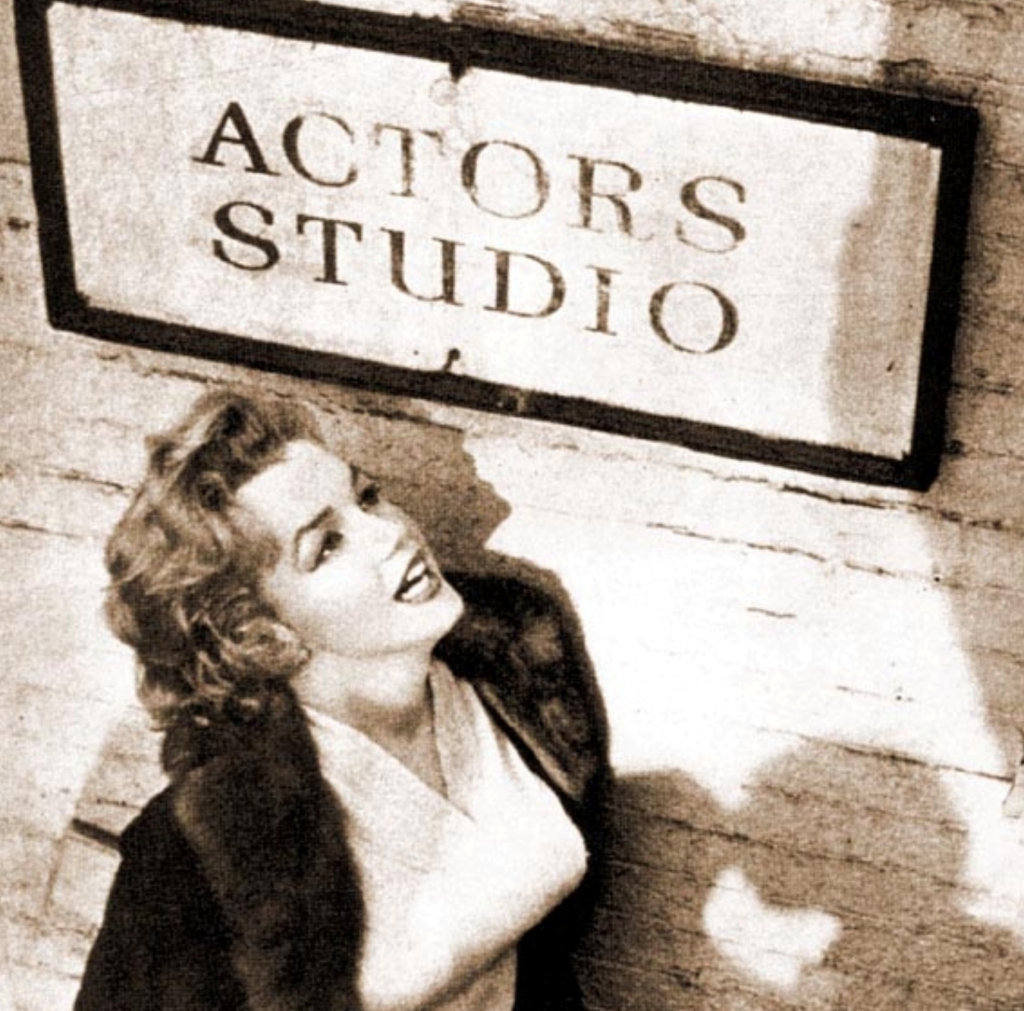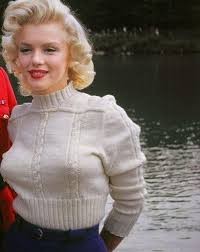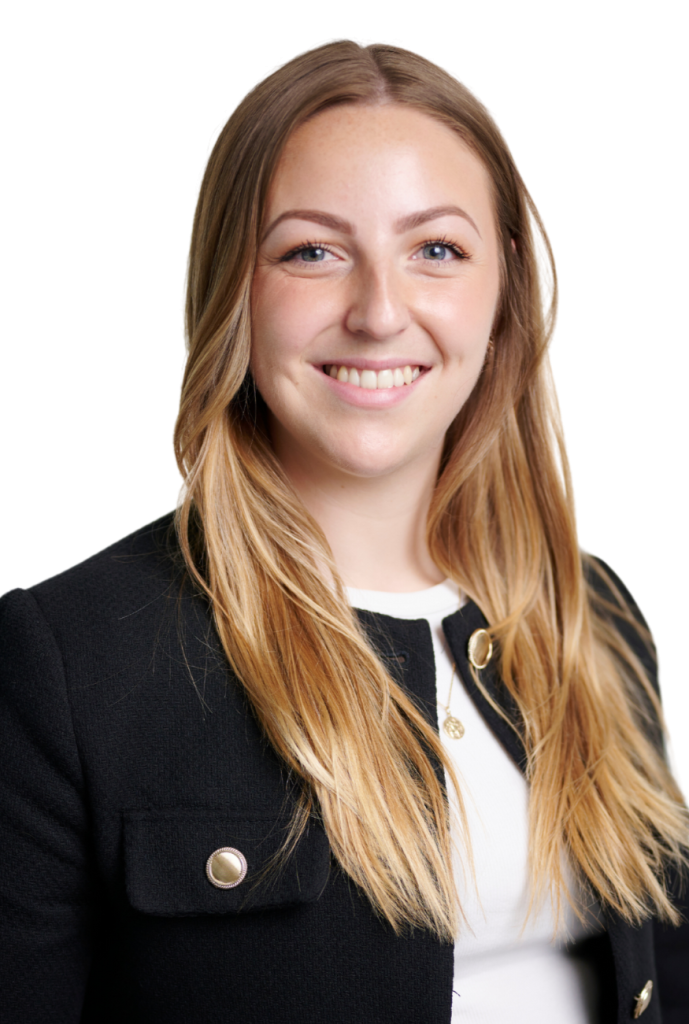Marilyn Monroe with Kayleigh Roberts

Waldorf-Astoria, New York City, 1955
The Waldorf-Astoria hums with quiet luxury — soft lamps, thick carpets, the faint echo of the city below. Marilyn Monroe, barefoot in a silk robe, paces near the window. A script lies open on the table beside an ashtray and a glass of champagne gone flat.
Here at the Waldorf Astoria, Marilyn reads Chekhov, attends acting classes, and writes in notebooks about discipline, fear, and the art of acting. It’s the perfect Guilded Cage for this most sought-after butterfly.
She turns as we enter, her expression both wary and amused. “You caught me in rehearsal for real life, this time!”
Miss Monroe, thank you for sparing time to see us. I want to introduce my friend, Miss Kayleigh Roberts. She’s long admired your courage and intelligence as much as the shimmer of your fame.
Marilyn smiles, warm and unguarded. “Hello, Kayleigh — please, call me Marilyn. And fire away with your questions.”
K: Thank you, Marilyn. I’m so grateful to you for making yourself available to us. When you think back to your childhood, what stays with you most, and how do those memories shape the woman you’re becoming now?
She curls one leg beneath her on the sofa, tracing the edge of a cushion with her thumb as if following an invisible thread: “Oh, there are flashes — bits of light and dark, like pieces of film that never got developed properly. I remember the smell of pine soap, the sound of doors closing, the feeling of waiting.
Mostly, I remember wanting to be seen — not as pretty, just seen. Maybe that’s still what drives me, that hunger to be visible, to be real. You probably understand that, Kayleigh — most women do, in one way or another.”
K: Certainly. You were once Norma Jeane. What made you choose the name Marilyn Monroe, and what does that name mean to you at this stage in your life?
She glances briefly at the mirror across the room, half-smiles, and looks away again: “The studio gave me ‘Marilyn,’ but I chose ‘Monroe.’ It was my mother’s maiden name — I thought it might protect me somehow.
Now, though, it feels like a costume I’ve worn too long. Norma Jeane was the dreamer, and Marilyn became the dream. I’m trying to find where they meet — somewhere between fantasy and truth.”
K: You’re now in New York, studying acting and trying to reinvent yourself.
If you could whisper something to the young woman just arriving in Hollywood a few years ago, what would you tell her?
She laughs softly and runs her finger around the rim of the champagne glass: “I’d tell her not to be so eager to please. I’d say that being loved by everyone can be the loneliest thing in the world.
And I’d whisper that it’s all right to be scared — that fear means you care.”
K: You’ve broken from the studio system and created your own production company, a bold step for any actor, especially a woman. What kind of stories do you want to tell under your own name?
Marilyn leans forward, lighting a cigarette, the match flaring against her pale skin: “I want to tell stories about women who think, who ache, who make mistakes and survive them.
Hollywood has plenty of goddesses — I’d rather play a woman who burns her toast and still dares to dream. It’s not about escaping; it’s about building something new that belongs to me.”

K: You’re training at the Actors Studio with Lee Strasberg. What are you discovering about yourself through this new way of acting?
She holds the cigarette delicately, then forgets it’s there as the ash lengthens.
“That I’ve been hiding behind a smile for years. Lee says acting isn’t pretending — it’s remembering. And that can hurt.
But when I touch something real inside myself, I stop being the picture on the screen and start being a person again.
I’ve been reading a lot lately — Joyce, Rilke, Freud — people who make you look inward. It’s funny, people think I’m all curves and no mind, but I love ideas. Reading helps me find the parts of myself the camera can’t see.”
K: Do you find reading gives you something acting can’t — maybe a way to understand yourself when you’re offstage?
She exhales a thin line of smoke, watching it drift toward the ceiling: “Yes, that’s exactly it, Kayleigh. Acting lets me feel everything, but books help me put words to it. When I read a line that feels true, it’s like someone else is helping me think. That’s the kind of connection fame can’t give you.”

Andrew: Marilyn, I have a particular question for you that I know Kayleigh also wants to hear your answer.
You were once reported as visiting a shopping mall with a friend who expressed surprise that no one there recognised Monroe had arrived.
You reportedly replied: “Oh, do you want me to put on Marilyn Monroe?”
You did — and within minutes, you were surrounded by a massive crowd of people.
First, is this story true? And second, does this suggest that your public persona, the person we feel is Marilyn Monroe, does not exist, that it’s all fake?
She laughs — a low, delighted sound — and suddenly shifts, shoulders back, chin lifted, eyes half-lidded.
For a moment, the room brightens with the energy of recognition: “It’s true. My friend Amy and I were walking through the city, no sunglasses, no fanfare, and no one noticed.
Then, after she mentioned that no one noticed Marilyn Monroe, I said, ‘Watch this.’
I shifted something, my walk, my smile, maybe just the air around me, and suddenly everyone paid attention.
It was like lighting a match in the dark. It isn’t fake, exactly. It’s a part of me that I learned to turn on, like a lamp. People don’t realise how much of fame is performance, not deception, but rather amplification.
Marilyn is a character I created to survive. Norma Jeane would have been lost without her. But when the lights go out, I still have to find my way back.”
K: Did you ever enjoy using that image, knowing you could switch it on or off, as you did in that crowd?
She gives a sly little smile, eyes glinting with mischief: “Oh yes. There’s power in being looked at, if you understand the spell. The trick is not to believe your own magic, Kayleigh.”
K: You’ve spoken about loneliness and self-doubt. What helps you through those moments when they return?
“I write. I pray. I remind myself that pain isn’t proof of failure, it’s proof of feeling. And maybe that’s what gives my work whatever truth it has.”
K: Do friends or mentors help you through those times, or is it something you face alone?
She folds her arms, thoughtful but calm: “Sometimes people help without realising it, a kind word on set, a letter from a fan. But mostly it’s an inside job. You can be surrounded by people and still have to rescue yourself, Kayleigh.”
K: If someone were to truly understand you, not the image, but the woman sitting here now, what would you want them to know?
“That I’m more afraid than I look. But I’m also more determined. I’m not an angel or a fool. I’m just trying to make something beautiful out of the mess.”
She smiles, a little sadly, a little proudly, and stands, gently making it clear our time together has ended.
“Well, Kayleigh, thank you for your most insightful questions. “That was quite the rehearsal. Maybe next time, we’ll make it opening night.”

© October 2025

Kayleigh Roberts, Project Administrator, comments:
“My conversation with Marilyn felt incredibly real. It was as if I had stepped into her world at the time of the interview.
The vivid descriptions of her body language and facial expressions painted such a clear picture that I could almost see her sitting before me. It truly felt like I was there, sharing that moment with her.
What stood out the most were her answers. They felt genuine and full of personality. Her tone, phrasing, and reflections matched what I imagine the actual Marilyn would have said. It truly felt like I was sitting across from her, having a real conversation.
Thank you so much for this, Andrew.
